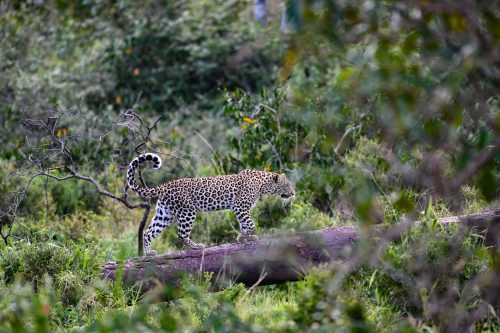
Two weeks ago, we stated that Ruka, one of the Inselberg males had lost one of his eyes supposedly due to an altercation with one of his brothers over mating rights. We are happy to make a correction and say that he actually didn’t lose the eye — Kenya Wildlife Service tended to him and the wound is healing up nicely. In fact, we saw him with a Topi kill and relaxing with one of his brothers (assuming this is probably a different one).
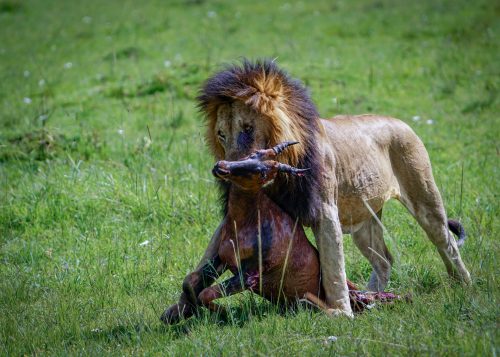
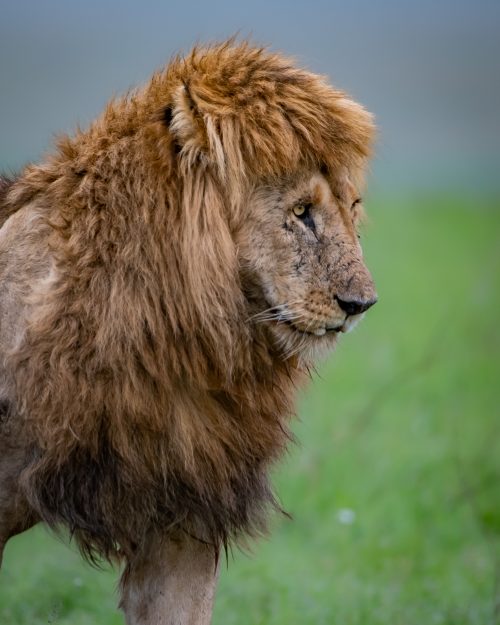

We had suspected that Risasi had successfully given birth to her first litter of cubs and we can confirm that as she was seen relocating three cubs to a different site. Moving from nest to nest is a common practice with cheetah to avoid detection by other predators. With a very low survival rate, only about 10% of cheetah cubs reach maturity. Typically weaned at 6-8 weeks, the cubs will then leave the den and follow the mother from then on.

We came across her as she was leaving the new area where she had stashed her cubs. She was looking for food and successfully secured what must have been a hare because she devoured it, leaving nothing for the vultures.


Risasi is not the only cheetah we have been keeping up with in the Triangle. Imani (a Swahili word meaning “faith”) is about to turn ten years old in July and her distinctly dark, heavily spotted coat makes her easily identifiable. Interestingly, the Mara Predator Conservation Programme has been able to document Imani with a total of 22 cubs from six litters over the years. She spends most of her time in conservancies outside the Reserve and occasionally in northern Serengeti, Tanzania. Our guide Robert and his guests were lucky enough to witness her successfully take down a Thomson's Gazelle.

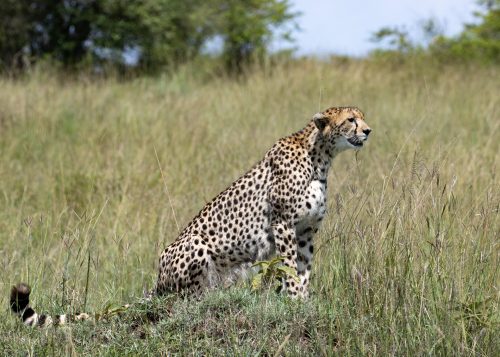
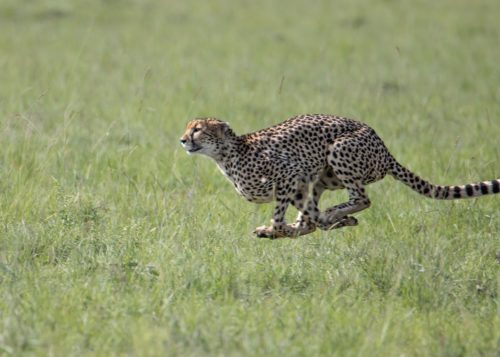
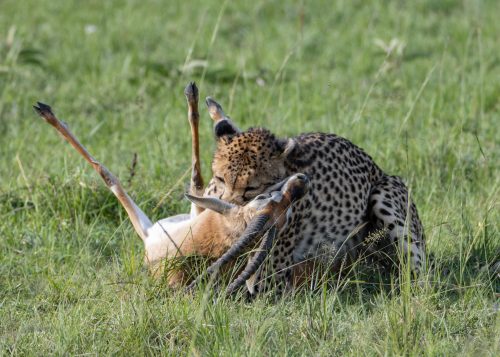

Our ever so lovely and playful Bush Princess continues to delight visitors to the Triangle with exceptional chances to take photographs (once she's woken up properly, of course). These are some lovely images taken by two of our guests who rented cameras from The Angama Photographic Studio.
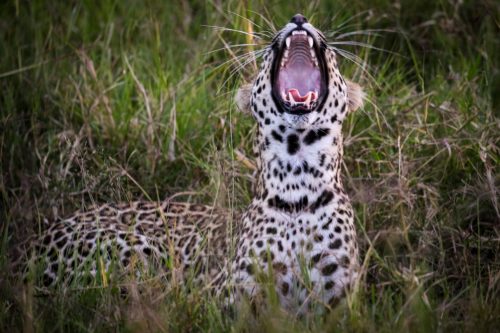
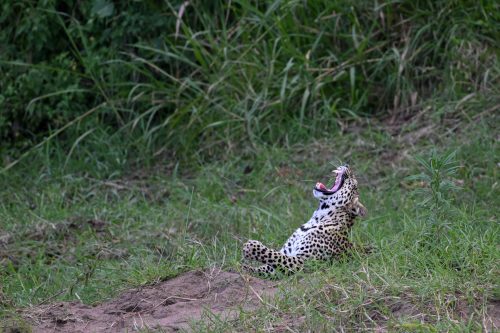
As we drove through an area called Maji ya Ndege ("bird waters") we saw vultures hovering near the river. We went towards the commotion and came across the carcass of a hippo. It was mostly consumed and what remained were scraps and bones. We watched as nature's hierarchy of scavengers unfolded before our eyes. We heard that earlier in the day there were over a hundred hyenas feeding on the hippo. When we arrived, there was a single hyena that slowly and meticulously ate any pieces of meat left over. The vultures circled patiently watching as the hyena audibly crushed bone after bone. Some time later, the hyena slowly disappeared into the grass and the vultures — the hyenas of the sky — immediately swarmed the hippo. Nearby some Marabou storks and a few other vultures watched as three larger vultures fed.
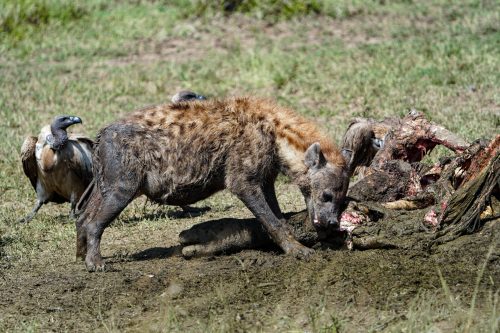
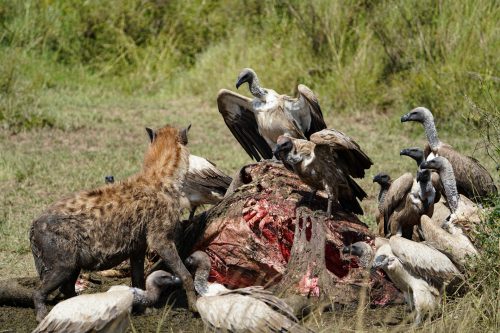
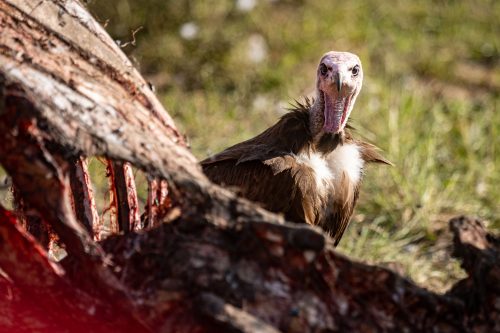

It’s quite unusual to see lions climbing a tree as they are not evolutionarily adapted to scale trees and branches with their heavy-set bodies. They are quite awkward at this and lack the agility and ease like that of a leopard. As you can tell from these images, these two are juveniles, accompanied by an adult big female who tried to ascend the tree and failed. Why lions scale trees is unclear, but we assume it is to get a good vantage point to scan the surroundings or escape the swirling insects and the heat on the ground.

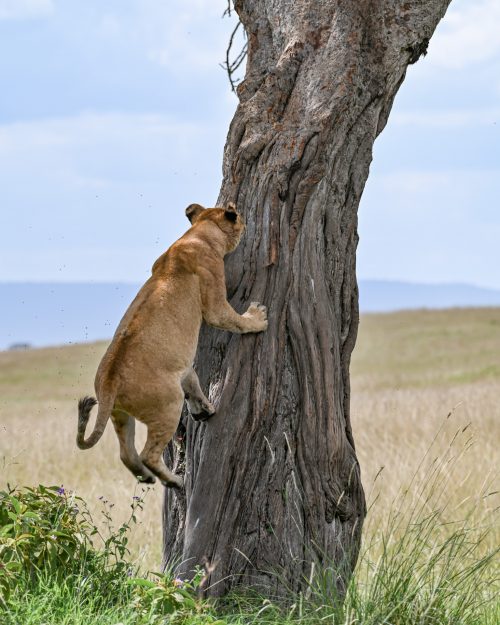
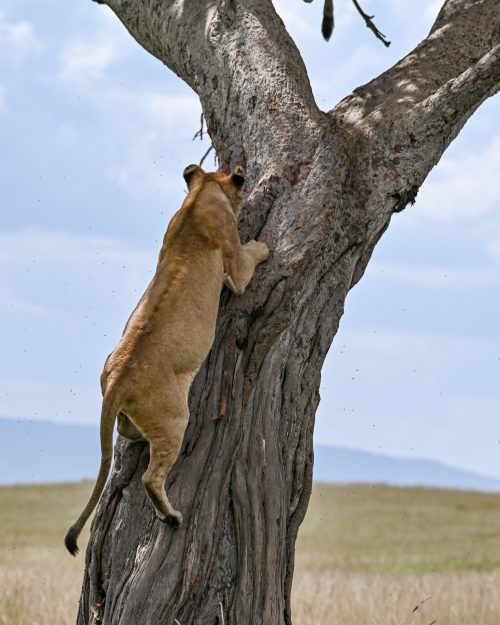
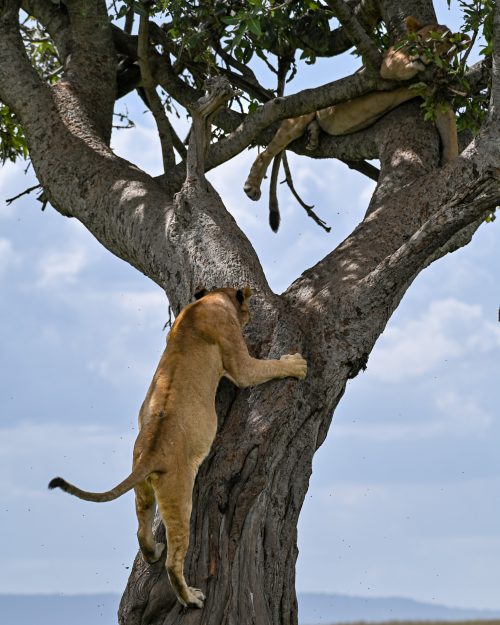
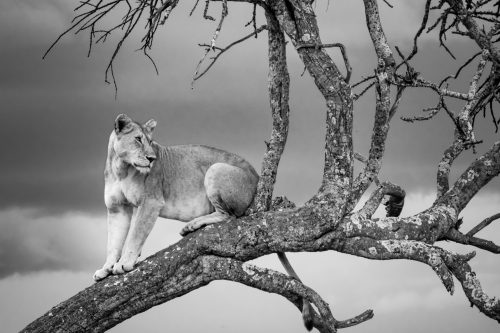
What a pleasure it always is to see our beloved old Shepherd Tree male still patrolling the Triangle. I think he deserves a mention every time we see him.

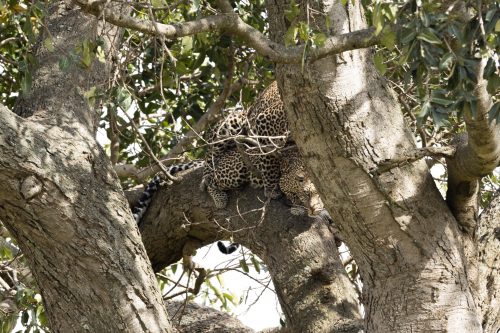
A year ago, Adam had a first-time sighting. Seen very rarely, possibly never in the Triangle, leopards mating in the branches of a tree is an exceptional event. You can watch the video here.
Filed under: This Week at Angama
Subscribe for Weekly Stories
Comments (0):

Weddings in the Mara